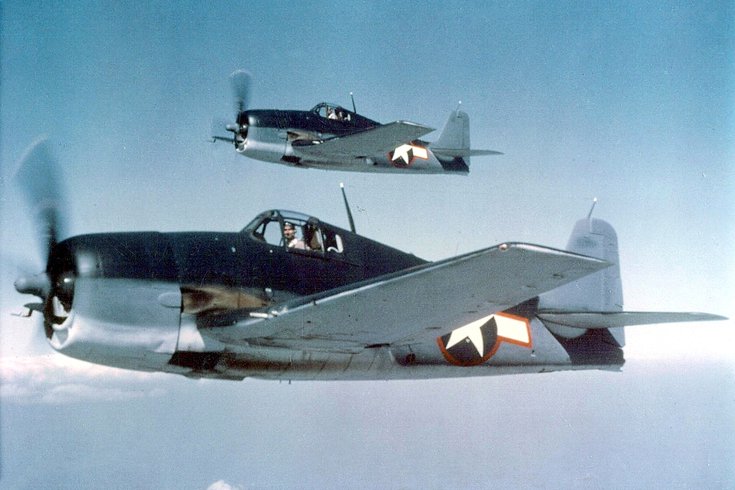
April 29, 2022
 U.S. Navy National Museum of Naval Aviation/Public Domain
U.S. Navy National Museum of Naval Aviation/Public Domain
Pictured above are two U.S. Navy Grumman F6F-3 Hellcats. An engine found in the Atlantic Ocean off the coast of Cape May might have belonged to a fighter jet like this or another World War II-era aircraft.
The engine of an aircraft that dates back to World War II was found underwater off the coast of New Jersey earlier this month while a former National Guardsman was out fishing for squid.
The discovery was made by fisherman Randy Camp and his captain, Jake Wiscott, while they were out fishing and felt something unusually heavy in their net.
When they got the machine out of the ocean, Camp knew pretty quickly that he had come across a neat artifact, the Press of Atlantic City reported.
CAPE MAY — A local commercial fisherman was out on the water recently when he recovered a World War II-era aircraft engine from the depths of the ocean. https://t.co/KU1WMbMo8y
— Press of AC (@ThePressofAC) April 29, 2022
Camp previously had worked in marine construction and reached out to the Naval Air Station Wildwood Aviation Museum, where he'd been involved in projects in the past.
William LaSalle, the curator of the museum in Lower Township, identified the engine as a Pratt & Whitney 18-cylinder R2800. LaSalle said the engine could have been used in different military and commercial aircraft, including the Northrop P-61 Black Widow fighter or the Douglas DC-6, which was used for a range of cargo, military and wildfire control purposes.
LaSalle added that the engine could have been from a Grumman F6F Hellcat, a carrier-based fighter aircraft that was used to counter Japan's Mitsubishi A6M Zero during the second half of the war in the Pacific. The museum has an F6F Hellcat on display.
The engine likely had been submerged in the Atlantic Ocean for more than 70 years.
Cape May was an important stronghold for the U.S. Navy during World War II, when it maintained administrative headquarters inside the former Cape May Hotel. The area was feared to be a target for German submarines and required a strong military presence that effectively replaced the tourism industry until the Navy's withdrawal in 1946. (The concerns about German U-boats off the Atlantic coast were not unfounded, and the remnants of one of them was found about 60 miles off of Barnegat Inlet in 1991).
To this day, it's not unusual to find munitions in the area, including some that have required detonation and others that have been taken in for display at the Naval Air Station Wildwood Aviation Museum.
The aircraft engine reportedly will need to be cleaned and aired out, but plans are in the works to display it at the museum with a plaque recognizing Camp's discovery.